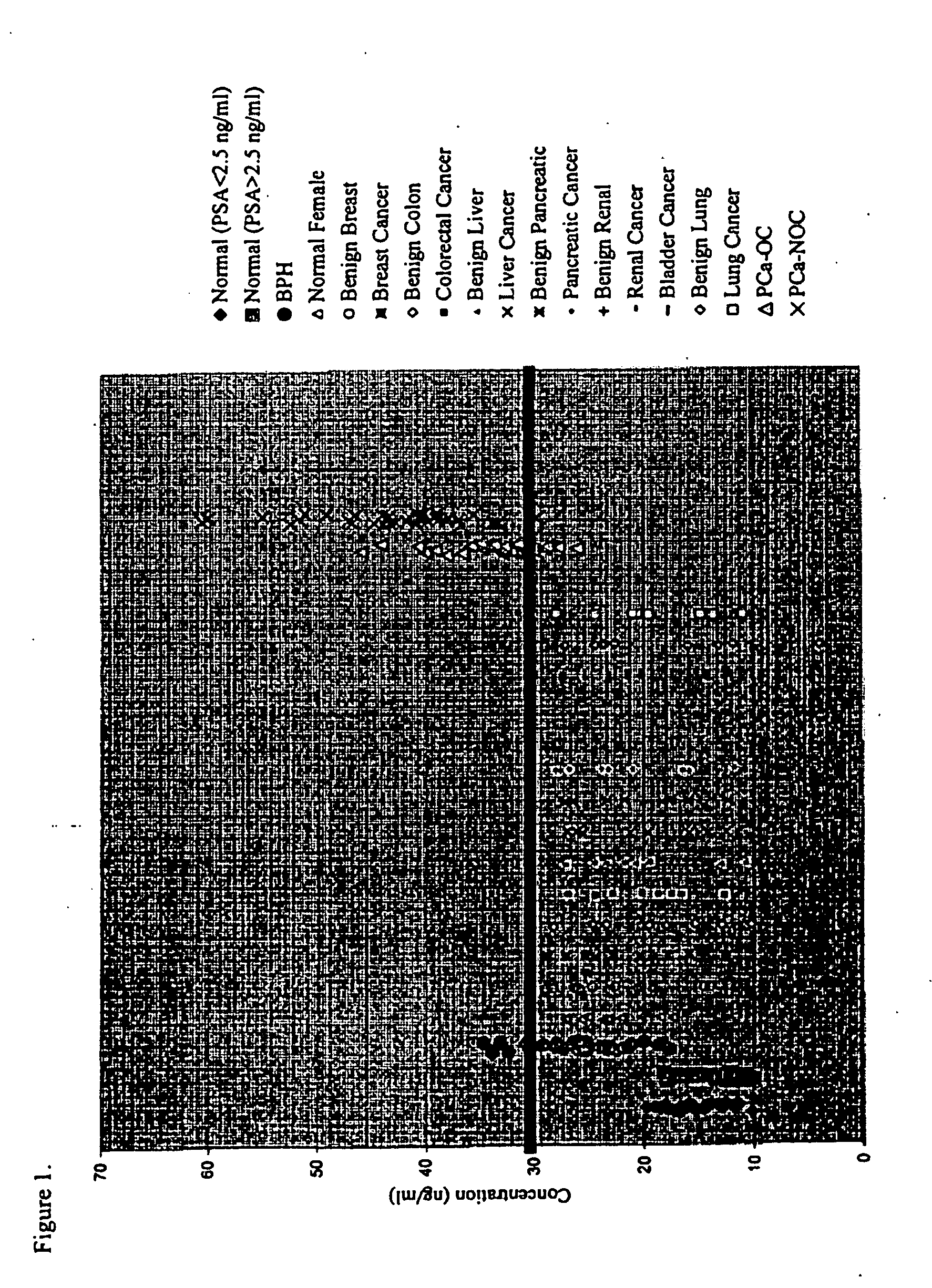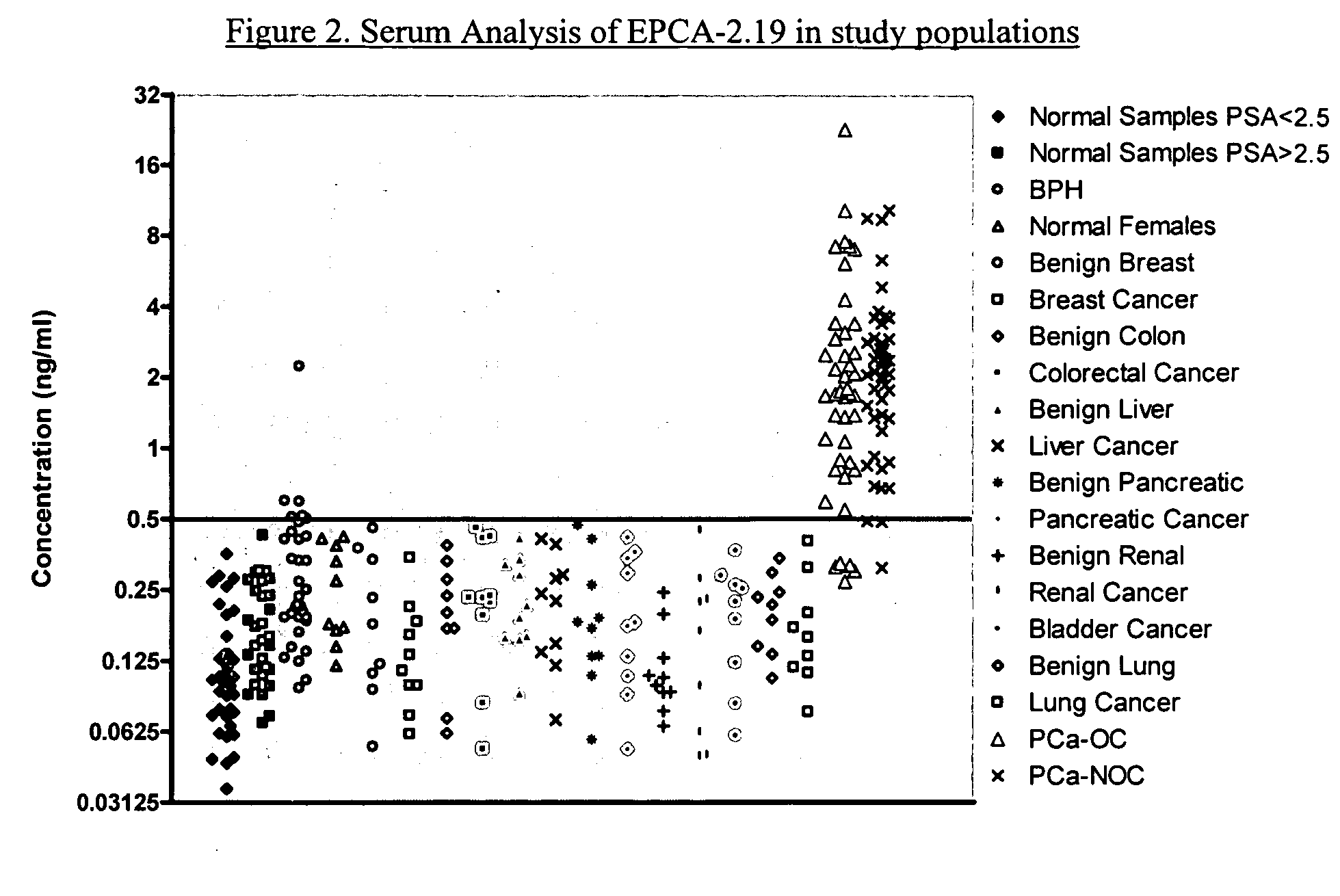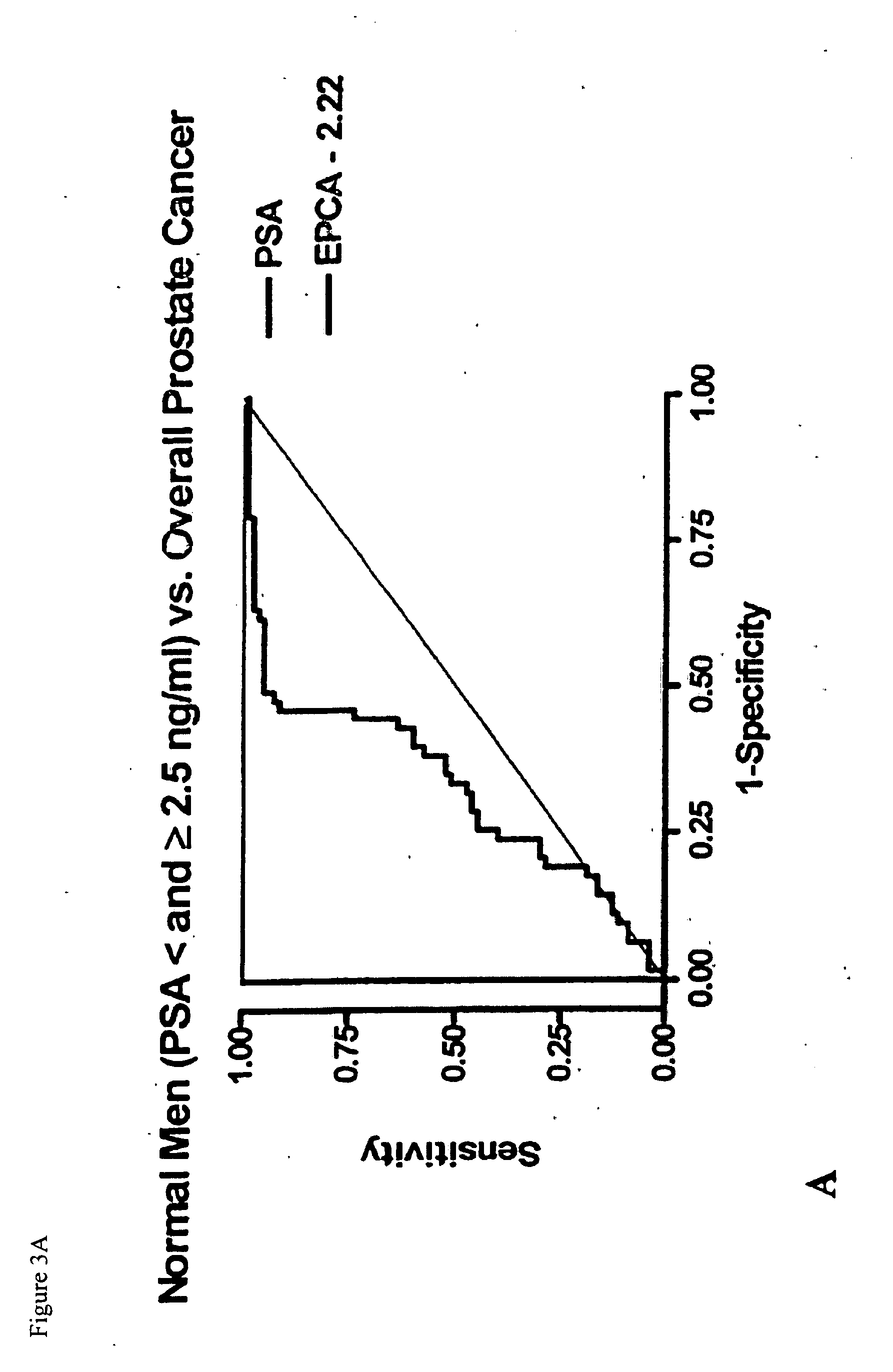Early prostate cancer antigen-2: a novel serum specific marker for prostate cancer detection
a prostate cancer and antigen technology, applied in the field of early prostate cancer antigen2, can solve the problems of confusion as to who, lack of specificity of psa, and large number of unnecessary biopsies
- Summary
- Abstract
- Description
- Claims
- Application Information
AI Technical Summary
Benefits of technology
Problems solved by technology
Method used
Image
Examples
Embodiment Construction
Isolation of Nuclear Matrix Proteins
[0020]Nuclear matrix proteins (NMPs) were extracted from prostate cancer tissue, adjacent tissue from these individuals, and donor patients according to the method of Getzenberg et al. (1991), supra. In summary, tissues were finely minced into small pieces and homogenized with a Teflon pestle on ice with 0.5% Triton X-100 in a solution containing 2 mM vanadyl ribonucleoside (Rnase inhibitor) to release the lipids and soluble proteins. The homogenized tissue then was filtered through a 350 μm nylon mesh. DNAse and RNAse treatments were used to remove the soluble chromatin. The remaining fraction contained intermediate filaments and NMPs. This fraction then was disassembled with 8 M urea, and the insoluble components consisting of carbohydrates and extracellular matrix were pelleted. After dialyzing the urea out, the intermediate filaments were allowed to reassemble and were subsequently removed by centrifugation. The NMPs then were pre...
PUM
 Login to View More
Login to View More Abstract
Description
Claims
Application Information
 Login to View More
Login to View More - R&D
- Intellectual Property
- Life Sciences
- Materials
- Tech Scout
- Unparalleled Data Quality
- Higher Quality Content
- 60% Fewer Hallucinations
Browse by: Latest US Patents, China's latest patents, Technical Efficacy Thesaurus, Application Domain, Technology Topic, Popular Technical Reports.
© 2025 PatSnap. All rights reserved.Legal|Privacy policy|Modern Slavery Act Transparency Statement|Sitemap|About US| Contact US: help@patsnap.com



